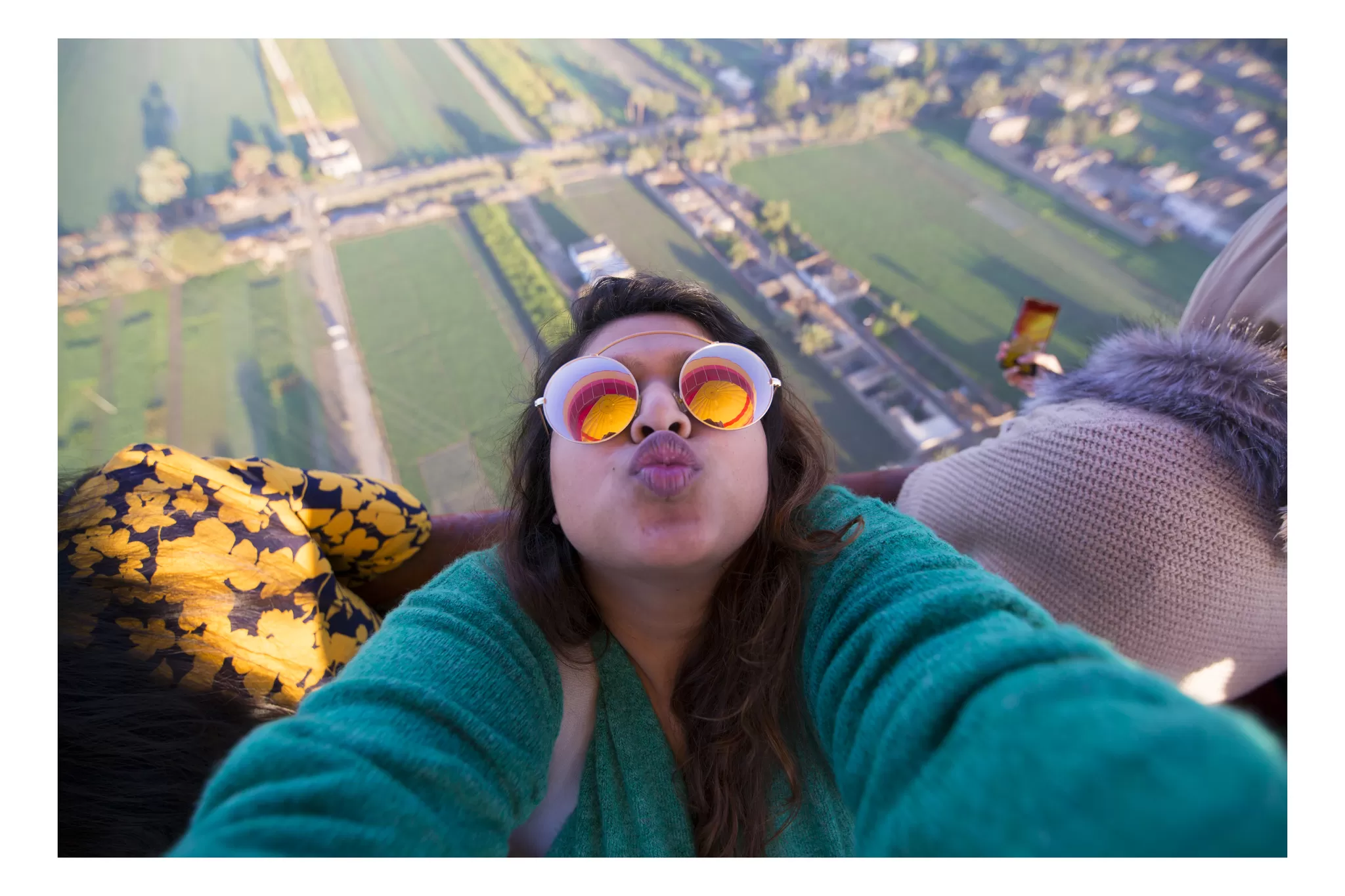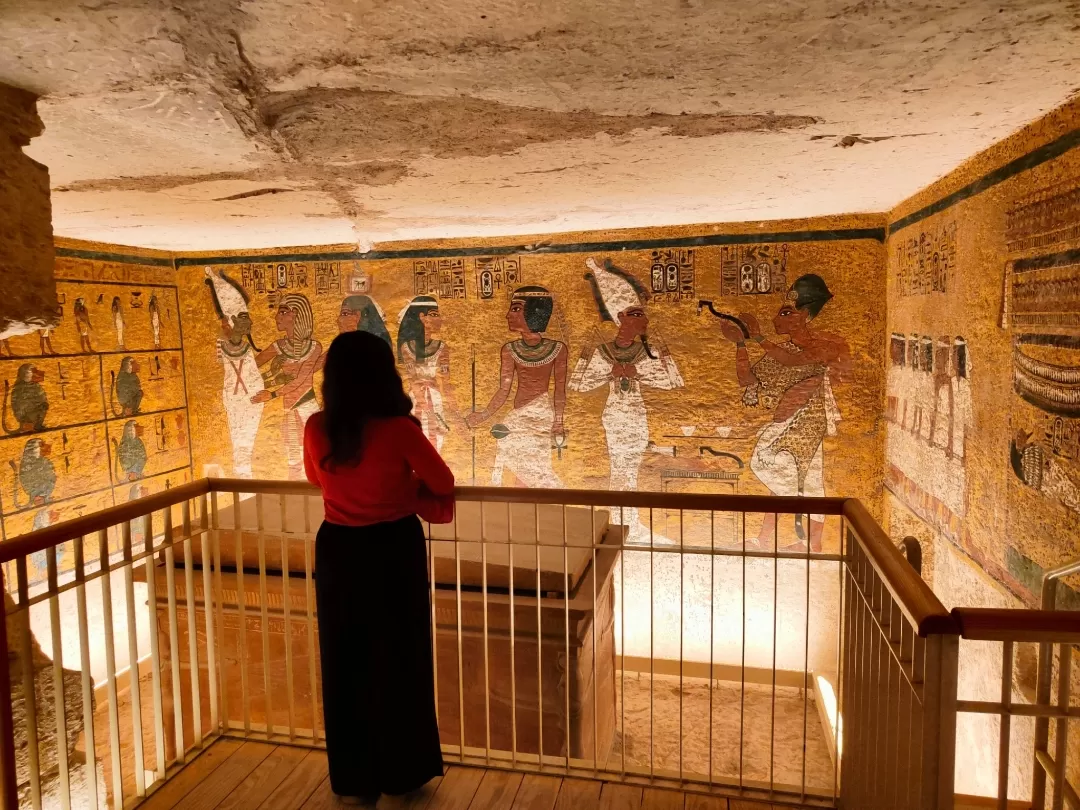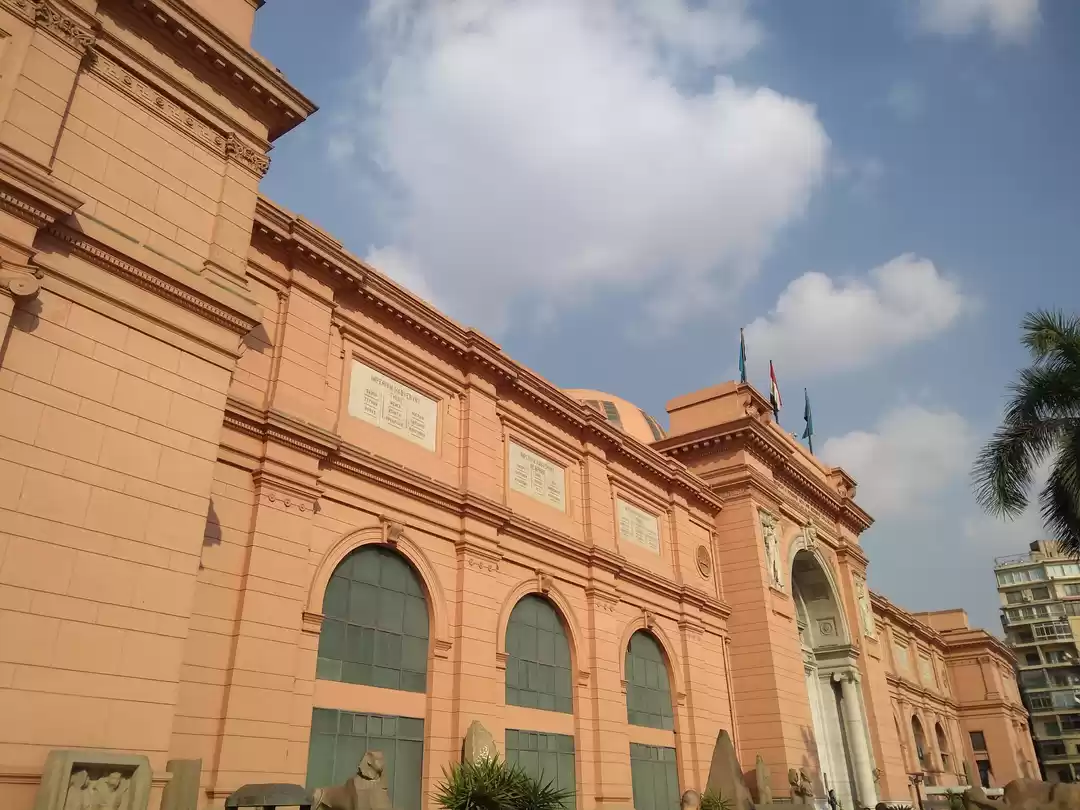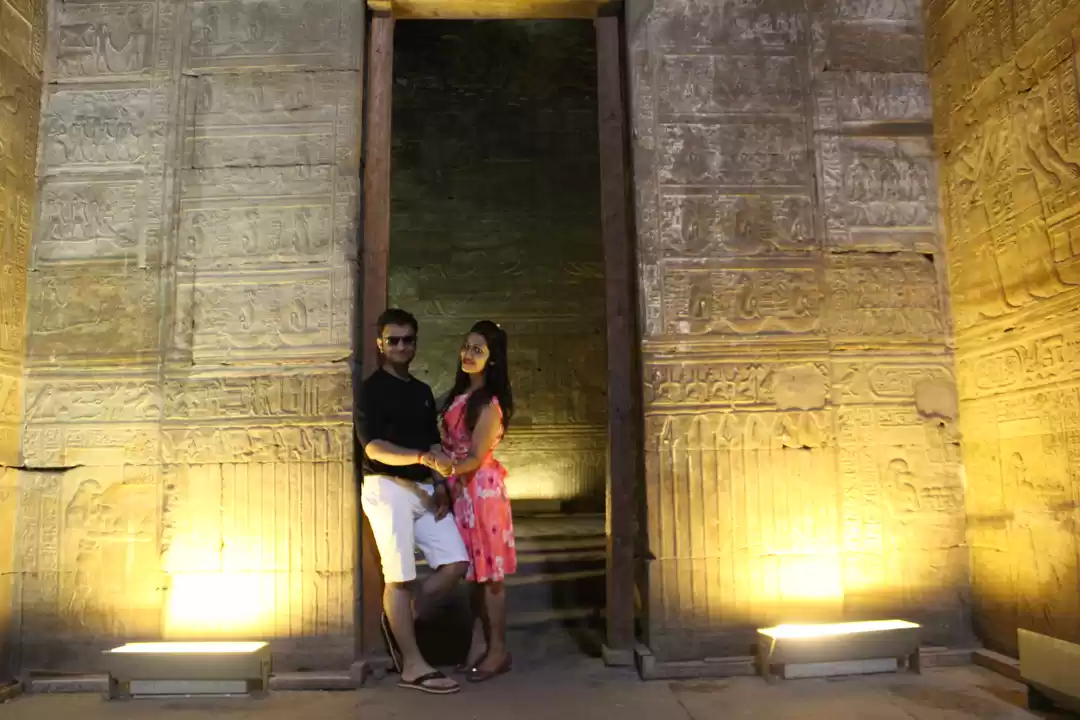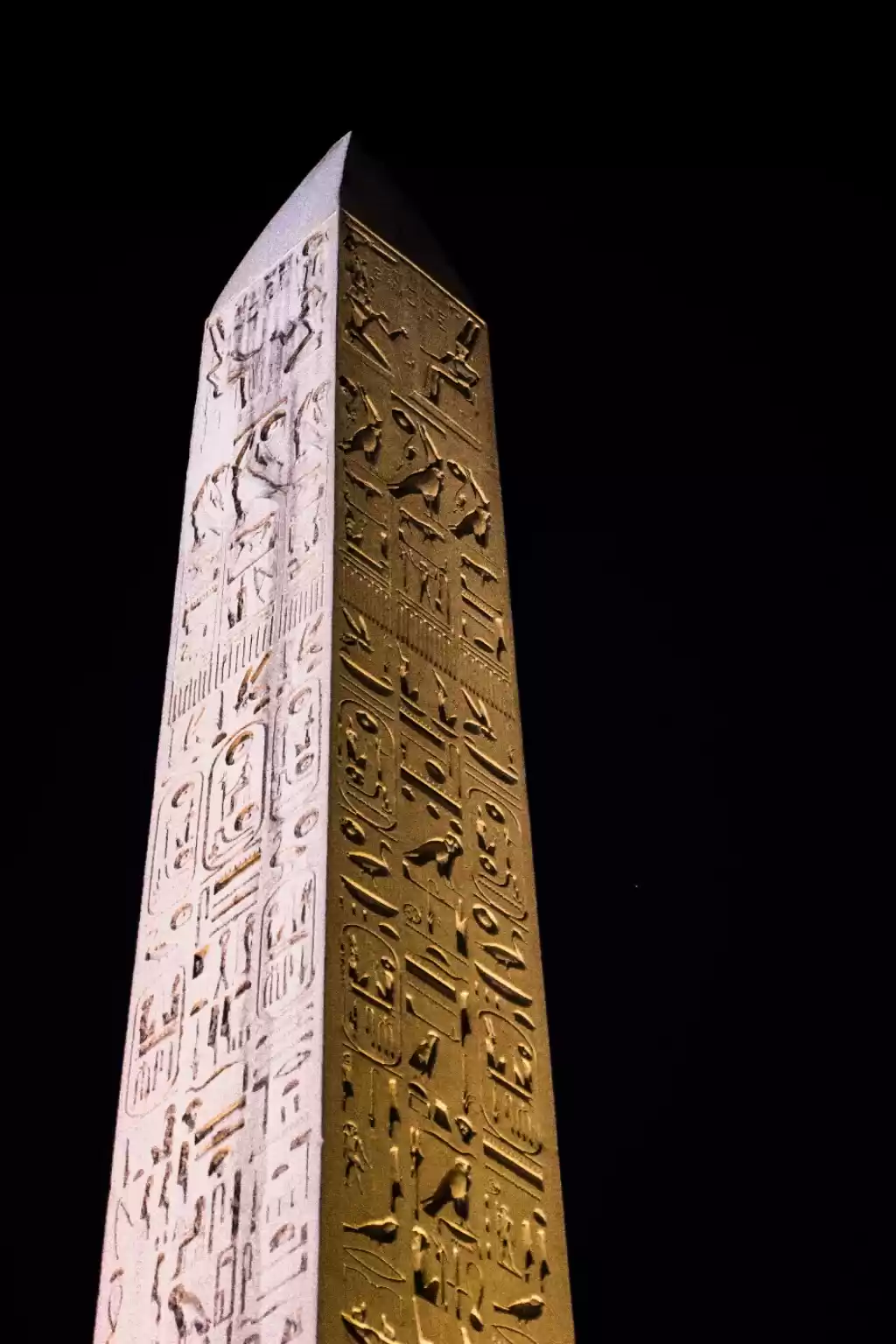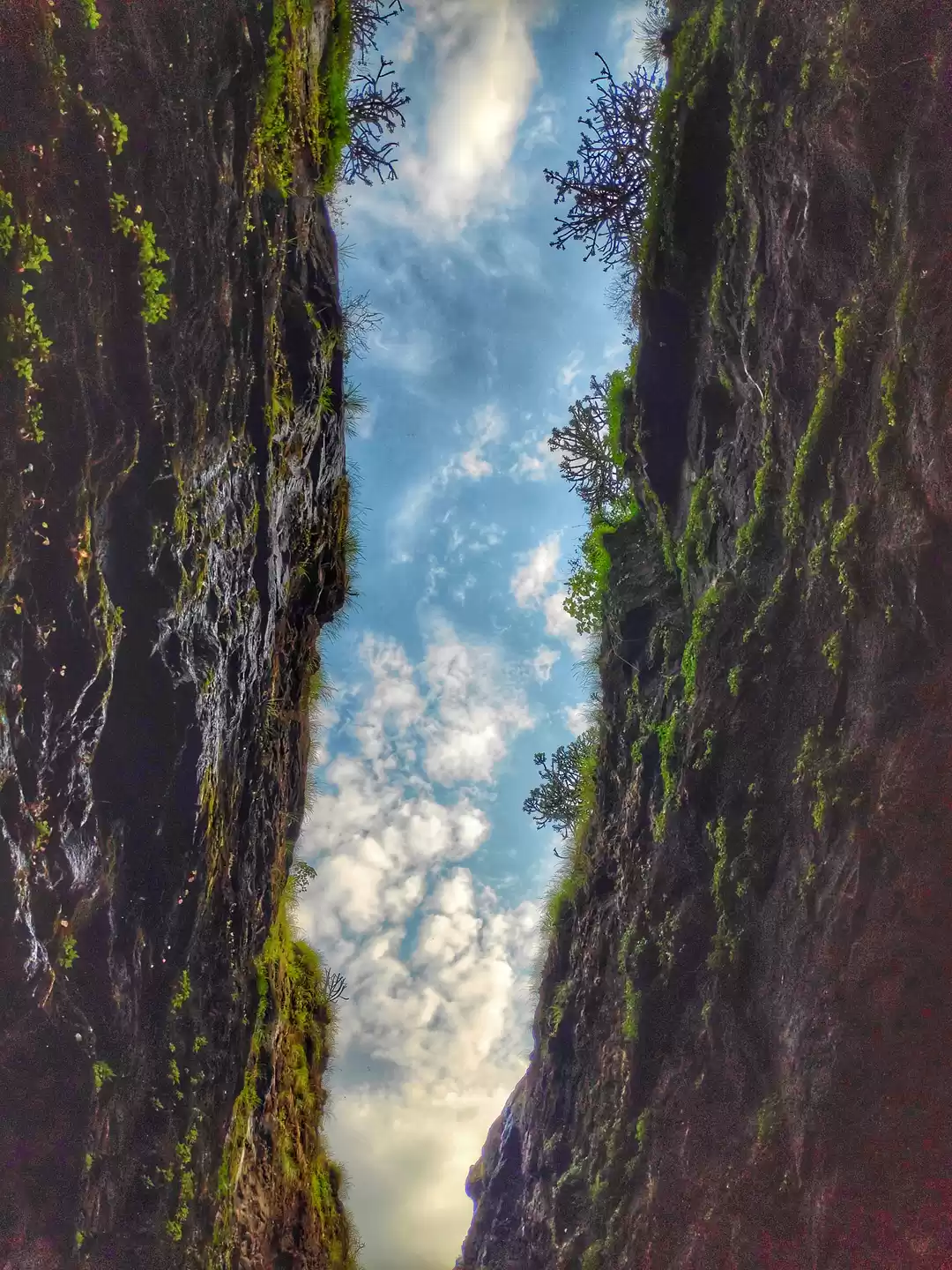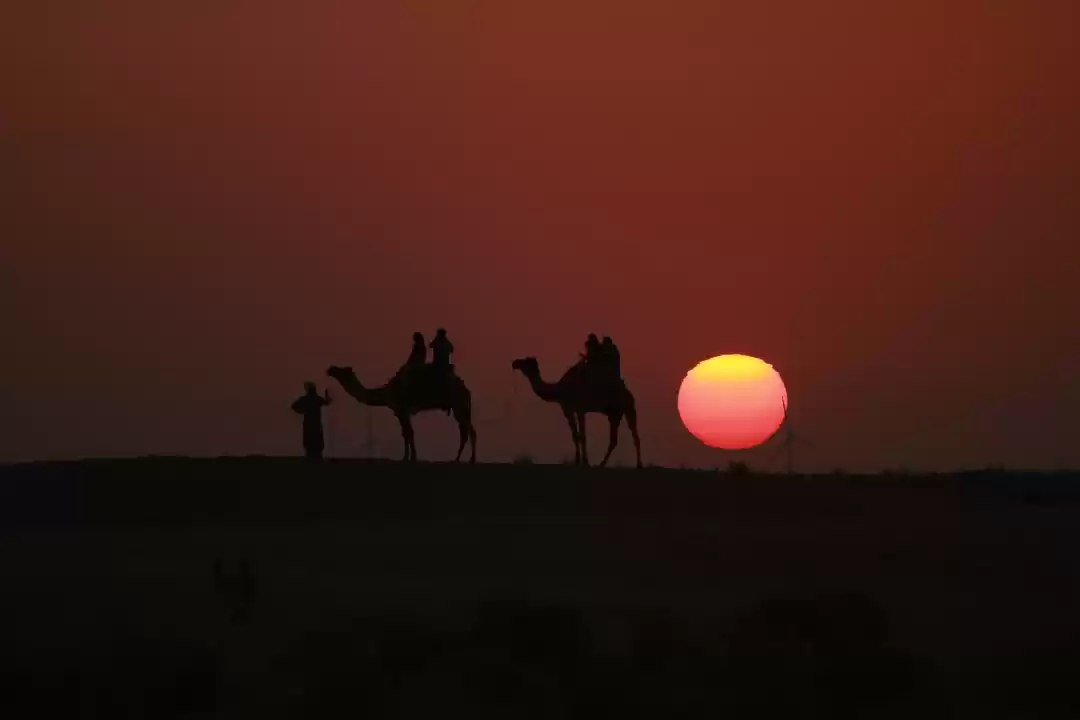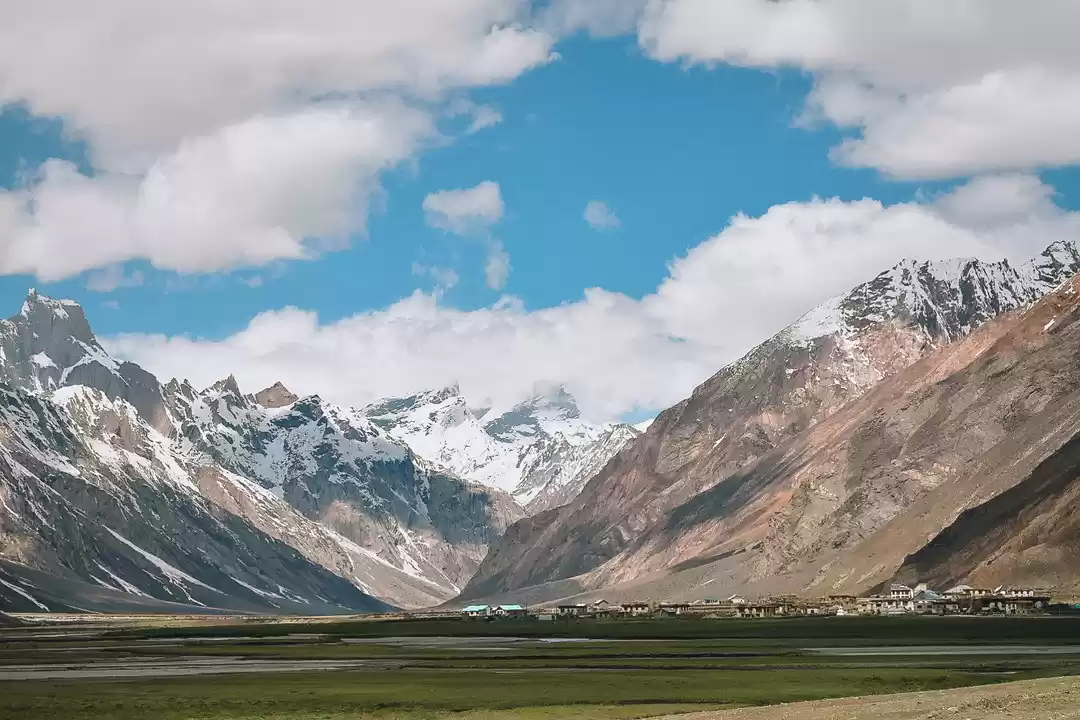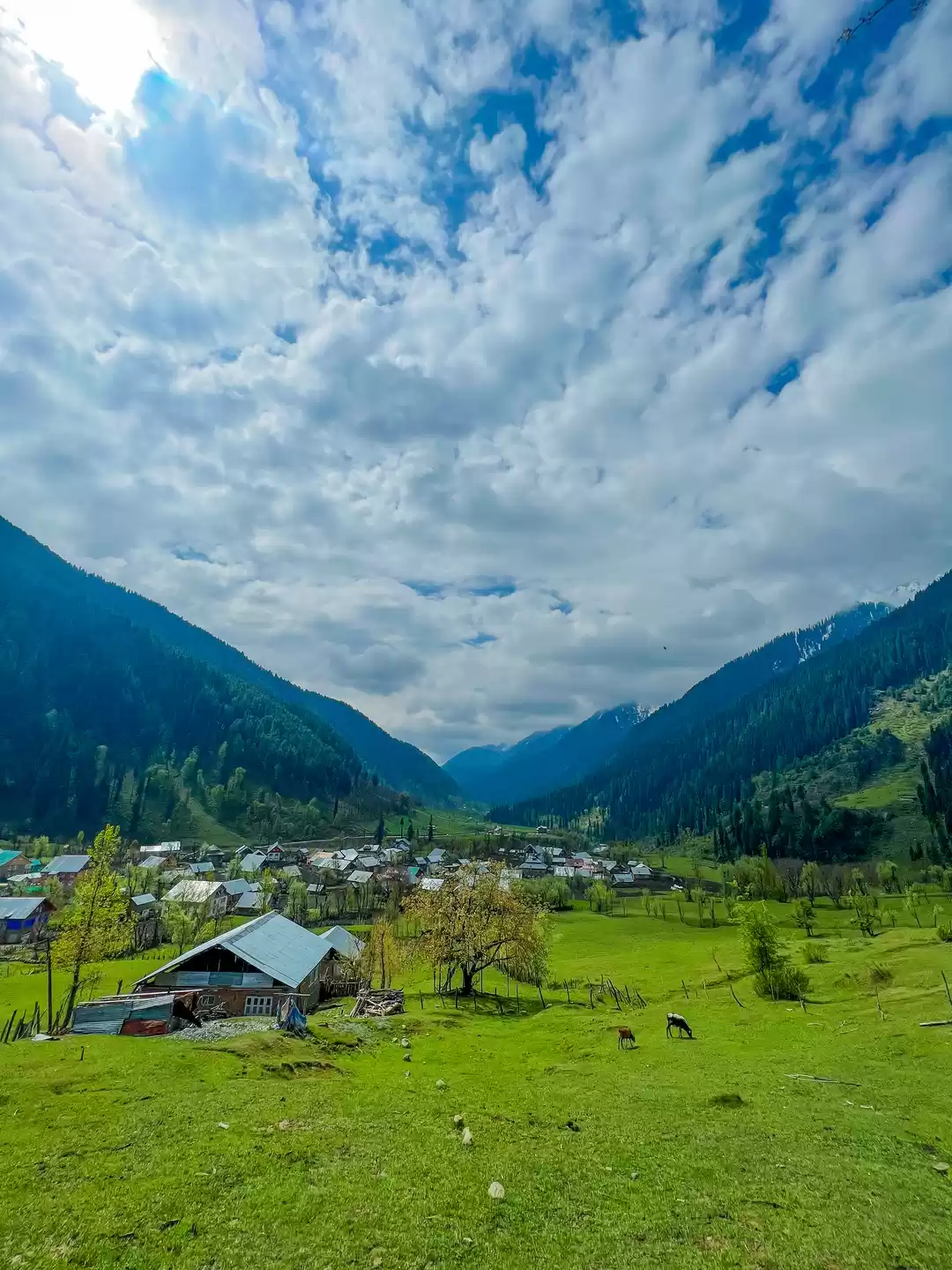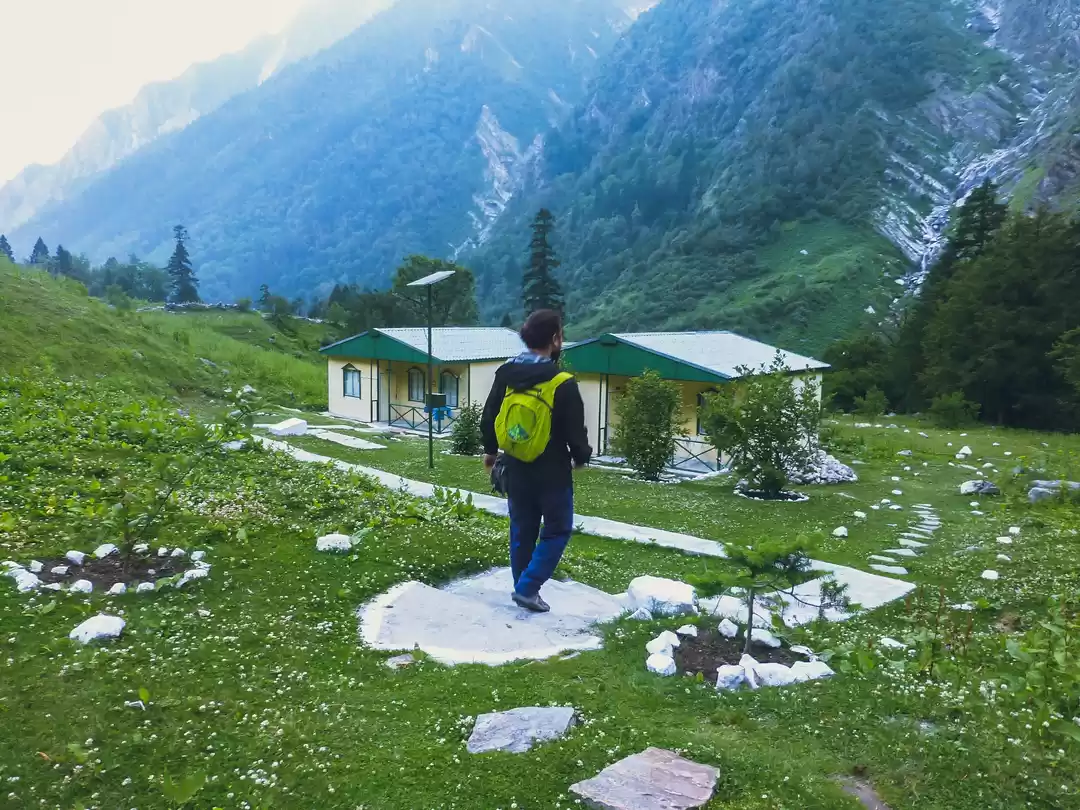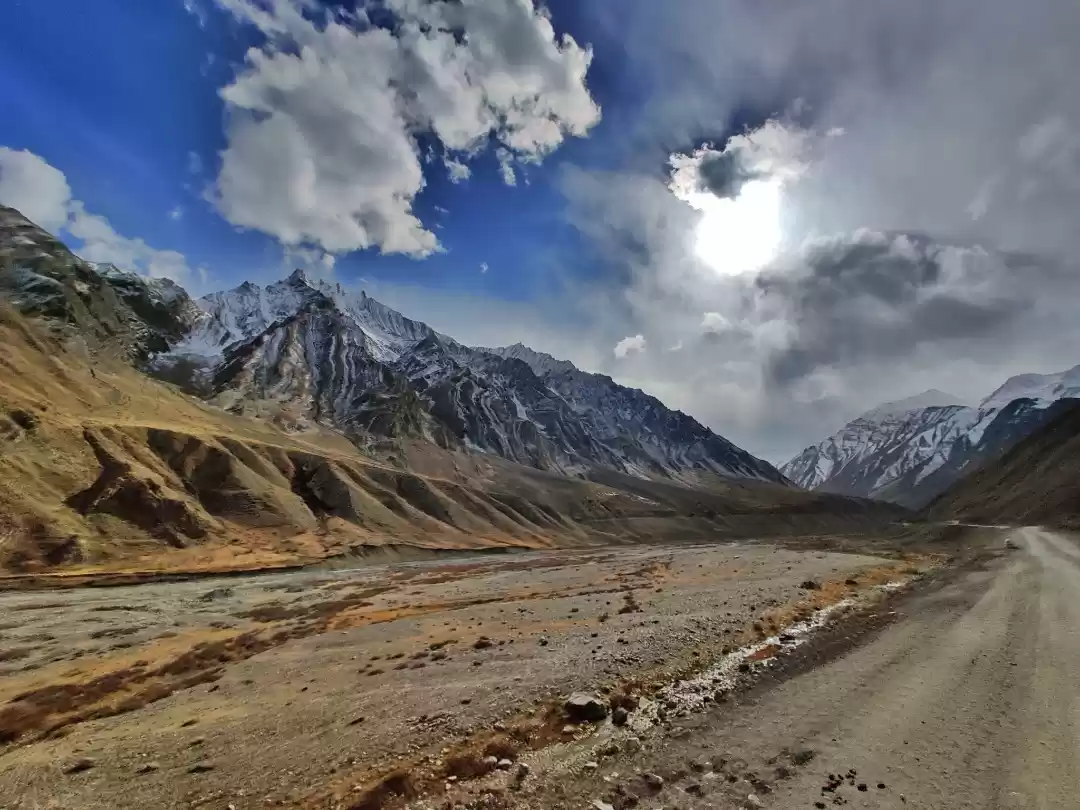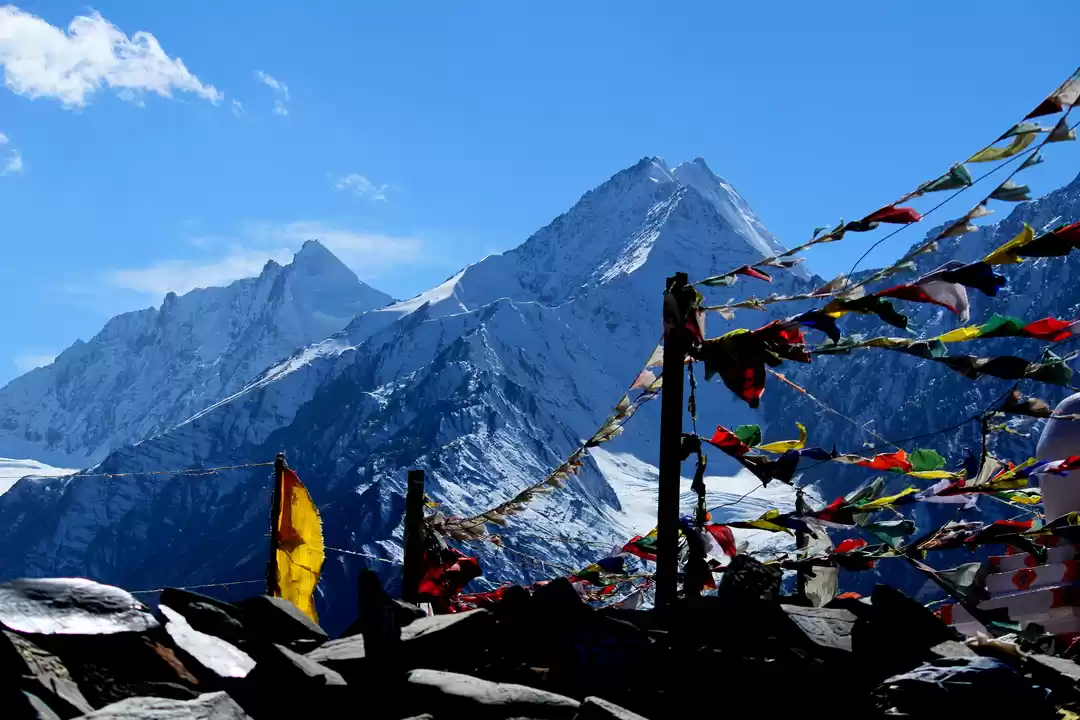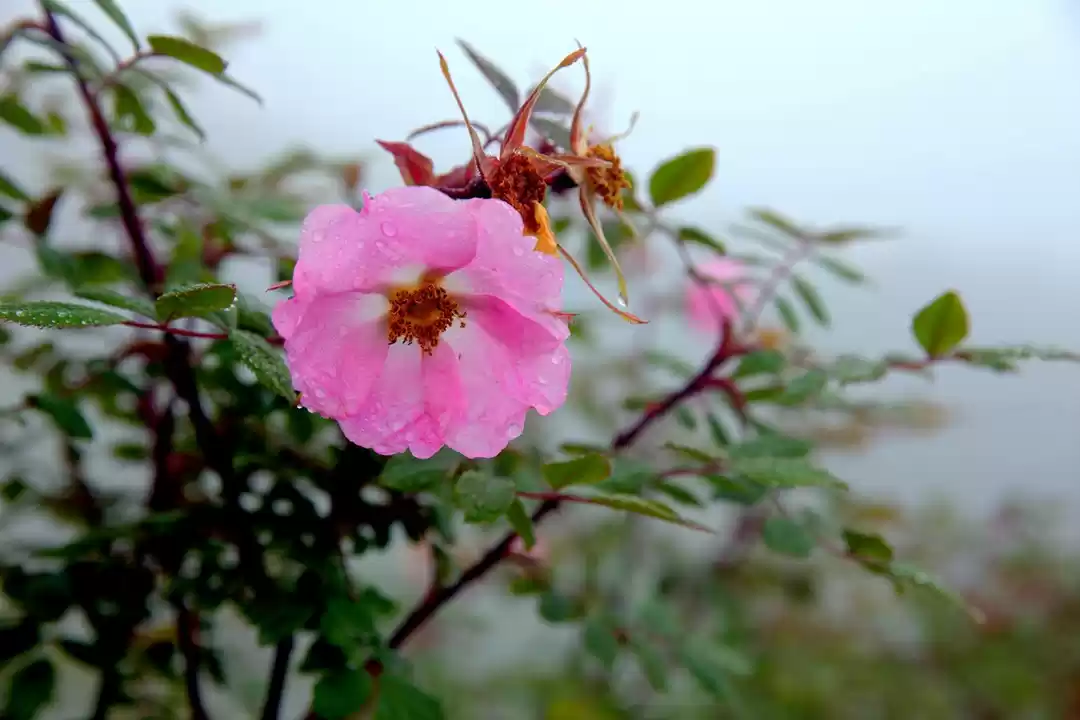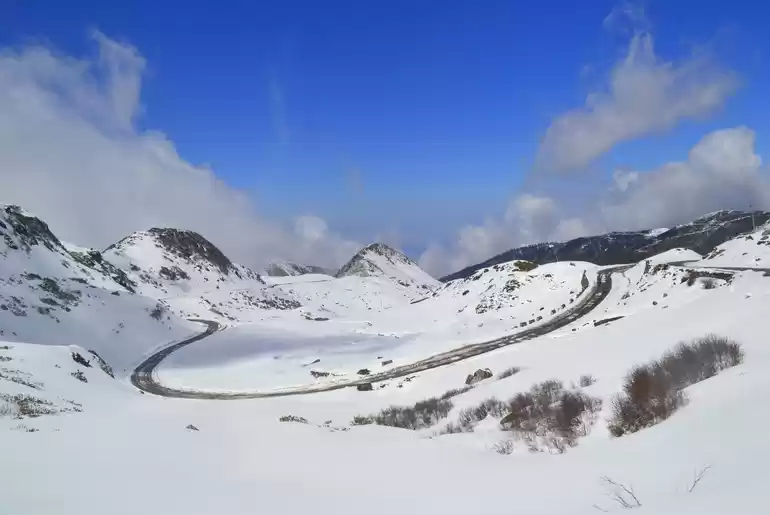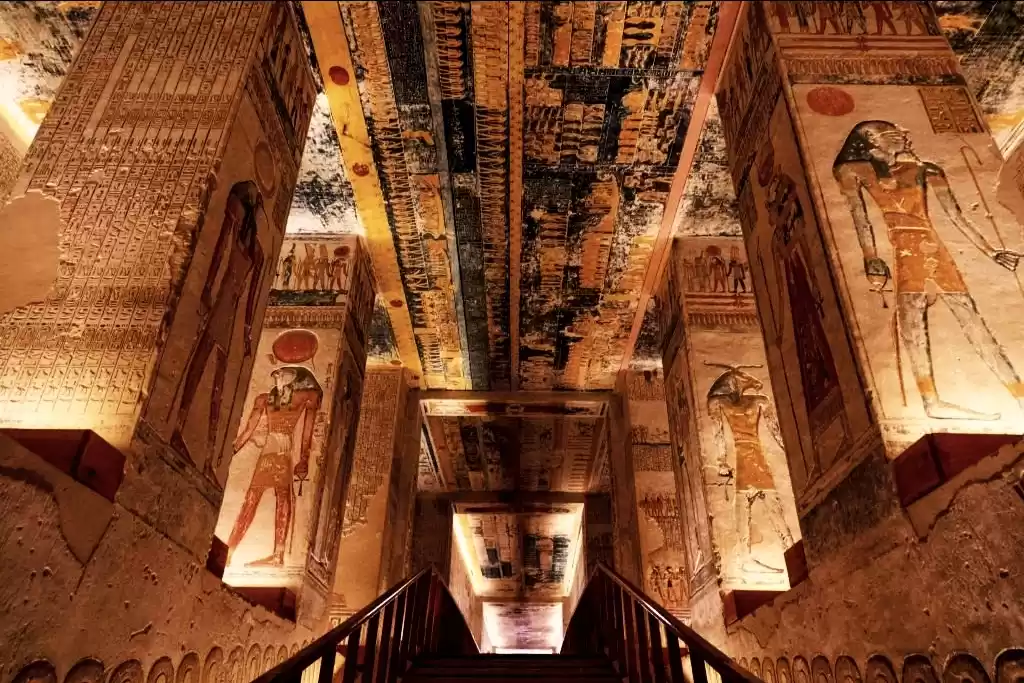Imagine walking into a dark and narrow corridor, surrounded by colorful paintings and mysterious symbols. As you descend deeper into the earth, you feel a sense of awe and wonder. You are about to enter the tomb of a pharaoh, who ruled over Egypt thousands of years ago. You are about to discover the hidden secrets of the Valley of the Kings.
The Valley of the Kings is one of the most spectacular and fascinating destinations in Egypt. It is a royal burial site for the pharaohs of the New Kingdom period, who ruled from 1550 to 1069 BC. Here, you can find more than 60 tombs, each with its own unique features and treasures. Some of the tombs are open to the public, while others are still hidden or undiscovered.
In this article, we will provide you with everything you need to know about the Valley of the Kings, such as its history, location, features, tickets, transportation, accommodation, best tombs to visit, photography rules, and nearby attractions. Whether you are a history buff, a culture lover, or an adventure seeker, you will find something to suit your interests and preferences in the Valley of the Kings.
Are you ready to discover the hidden secrets of the Valley of the Kings? Let’s get started!
What is the Valley of the Kings?
The Valley of the Kings is a valley in the west bank of the Nile, near the city of Luxor in Egypt. It is also known as the Valley of the Gates of the Kings, or Biban el-Muluk in Arabic. It is part of the ancient city of Thebes, which was the capital of Egypt during the New Kingdom period.

History
The Valley of the Kings was used as a royal burial site for the pharaohs of the New Kingdom period, who ruled from 1550 to 1069 BC. The New Kingdom period was a time of prosperity and power for Egypt, when it expanded its territory and influence in the region. The pharaohs of this period were considered to be divine rulers, who had a close relationship with the gods.
The pharaohs of the New Kingdom period chose to be buried in the Valley of the Kings for several reasons. First, they wanted to be closer to the god Amun, who was worshipped at the nearby temple of Karnak. Second, they wanted to protect their tombs from robbers and invaders, who had plundered the previous burial sites in the pyramids and the mastabas. Third, they wanted to express their individuality and creativity, by decorating their tombs with paintings, sculptures, and hieroglyphs that depict their life, beliefs, and afterlife.
The first pharaoh to be buried in the Valley of the Kings was Tuthmosis I, who ruled from 1504 to 1492 BC. He was followed by his successors, such as Hatshepsut, Tuthmosis III, Amenhotep III, Akhenaten, Tutankhamun, Seti I, Ramses II, and Ramses III. The last pharaoh to be buried in the Valley of the Kings was Ramses XI, who ruled from 1107 to 1078 BC. After his death, the Valley of the Kings was abandoned and forgotten, until it was rediscovered by modern archaeologists and explorers.
Location
The Valley of the Kings is located in the west bank of the Nile, near the city of Luxor in Egypt. It is about 500 km south of Cairo, the capital of Egypt. It is accessible by road, rail, or air from Cairo or other major cities in Egypt.
The Valley of the Kings is divided into two parts: the East Valley and the West Valley. The East Valley is where most of the tombs are located, and where most of the visitors go. The West Valley is where only a few tombs are located, and where fewer visitors go. The two valleys are separated by a mountain peak called al-Qurn, which means “the horn” in Arabic. Al-Qurn is considered to be a sacred symbol of the god Amun, who was worshipped at the nearby temple of Karnak.
Decoration
The tombs in the Valley of the Kings are decorated with paintings, sculptures, and hieroglyphs that depict the life, beliefs, and afterlife of the pharaohs. The decoration of the tombs reflects the artistic and religious changes that occurred during the New Kingdom period, as well as the personal preferences of the pharaohs.

The decoration of the tombs consists of several elements, such as:
The wall paintings, which cover the walls and the ceilings of the tombs. The wall paintings show scenes from the daily life, the religious rituals, and the funerary ceremonies of the pharaohs. They also show the journey of the pharaohs to the afterlife, where they face various challenges and trials, and meet different gods and goddesses. The wall paintings are made with natural pigments, such as ochre, malachite, and lapis lazuli, and are painted on a layer of plaster.
The sculptures, which are carved on the walls or the pillars of the tombs. The sculptures show the images of the pharaohs, their family members, their officials, and their servants. They also show the statues of the gods and goddesses, who protect and guide the pharaohs in the afterlife. The sculptures are made with stone, such as limestone, sandstone, or granite, and are sometimes painted or gilded.
The hieroglyphs, which are written on the walls or the sarcophagi of the tombs. The hieroglyphs are the ancient Egyptian writing system, which consists of symbols that represent sounds, words, or concepts. The hieroglyphs contain the names, titles, and epithets of the pharaohs, as well as the prayers, spells, and hymns that help them in the afterlife. The hieroglyphs are written with ink, which is made from carbon, water, and gum.
Discovery
The tombs in the Valley of the Kings were discovered, explored, and excavated by various archaeologists and adventurers, who were fascinated by the ancient Egyptian civilization. Some of the tombs were discovered by accident, while others were discovered by intention. Some of the tombs were found intact, while others were found robbed or damaged. Some of the tombs were opened to the public, while others were closed or restricted.
How to Visit the Valley of the Kings?
Visiting the Valley of the Kings is an unforgettable experience that will take you back in time to the ancient Egyptian civilization. However, there are some things that you need to know before you go, such as how to get the tickets, how to choose the tombs, how to deal with the crowds, and how to make the most of your visit. Here are some tips to help you plan and enjoy your visit to the Valley of the Kings:
Entry Ticket
To enter the Valley of the Kings, you need to buy an entry ticket, which costs 240 EGP (about 15 USD) for adults and 120 EGP (about 8 USD) for students. The entry ticket allows you to visit three tombs of your choice, except for the tombs of Tutankhamun, Seti I, and Ay, which require extra tickets. You can buy the entry ticket at the ticket office near the entrance of the Valley of the Kings, or online from the official website of the Ministry of Tourism and Antiquities.
When you buy the entry ticket, you will receive a paper ticket and a plastic card. You need to keep both of them with you during your visit, as you will need to show them to the guards at each tomb. You also need to keep your receipt, as you may need to show it to the guards at the exit. Be careful not to lose or damage your ticket, card, or receipt, as you may face a fine or a hassle.
Extra Tickets
If you want to visit the tombs of Tutankhamun, Seti I, or Ay, you need to buy extra tickets, which cost 300 EGP (about 19 USD) for Tutankhamun, 1000 EGP (about 64 USD) for Seti I, and 40 EGP (about 3 USD) for Ay. The extra tickets are sold separately from the entry ticket, and they are limited in number and availability. You can buy the extra tickets at the same ticket office or online, but you need to do it as early as possible, as they may sell out quickly.
The extra tickets are worth buying if you are interested in seeing the most famous or the most impressive tombs in the Valley of the Kings. The tomb of Tutankhamun is the only tomb that was found intact and full of treasures, such as the golden mask, the sarcophagus, and the mummy. The tomb of Seti I is the longest and most elaborate tomb in the Valley of the Kings, and it is decorated with paintings, sculptures, and hieroglyphs that show the beauty and the skill of the ancient Egyptian art. The tomb of Ay is the smallest and simplest tomb in the Valley of the Kings, and it is decorated with wall paintings that show the coronation and the burial of the pharaoh.
Tuf-Tuf Train
To get to the Valley of the Kings, you need to take a tuf-tuf train, which is a small electric train that runs from the parking lot to the entrance of the Valley of the Kings. The tuf-tuf train costs 4 EGP (about 0.25 USD) per person, and it takes about 5 minutes to reach the Valley of the Kings. You can buy the tuf-tuf train ticket at the ticket office or from the driver.
The tuf-tuf train is not necessary, as you can also walk to the Valley of the Kings, which takes about 15 minutes. However, the tuf-tuf train is convenient, especially if you are tired, hot, or in a hurry. The tuf-tuf train also offers a nice view of the valley and the mountain, and it can be fun for children.

Visitors Centre
Before you enter the Valley of the Kings, you should visit the visitors centre, which is located near the entrance of the Valley of the Kings. The visitors centre is a modern and informative museum that offers an overview of the Valley of the Kings, its history, its discovery, and its conservation. The visitors centre also has a 3D model of the valley, a replica of the tomb of Tutankhamun, and a movie theatre that shows a short film about the Valley of the Kings.
The visitors centre is worth visiting, as it will help you understand and appreciate the Valley of the Kings better. The visitors centre will also help you choose the tombs that you want to visit, as it has a map and a description of each tomb. The visitors centre is included in the entry ticket, and it is open from 6 am to 5 pm.
Opening Hours
The Valley of the Kings is open every day from 6 am to 5 pm. However, the opening hours may vary depending on the season or the holidays. The Valley of the Kings may open earlier or close later during the summer or the winter, or it may close for maintenance or security reasons. You can check the opening hours online or at the ticket office before you go.
The opening hours are important, as they will affect your planning and your experience. You should try to visit the Valley of the Kings as early or as late as possible, to avoid the crowds and the heat. You should also try to visit the Valley of the Kings on weekdays, rather than on weekends or holidays, to avoid the rush and the noise.
Crowd Levels
The Valley of the Kings is one of the most popular attractions in Egypt, and it can get very crowded during the peak season and the holidays. The peak season is from October to April, when the weather is cooler and more tourists visit Luxor. The holidays are from December to January, when many people celebrate Christmas and New Year, and from April to May, when many people celebrate Easter and Ramadan.
The crowd levels are important, as they will affect your enjoyment and your comfort. You should try to avoid the crowds and enjoy a more peaceful and quiet visit, by following these tips:
Visit the Valley of the Kings as early or as late as possible, preferably before 9 am or after 3 pm, when the crowds are thinner and the light is softer.
Visit the Valley of the Kings on weekdays, rather than on weekends or holidays, when the crowds are larger and louder.
Visit the less popular or the more remote tombs, such as Horemheb, Tuthmosis III, or Merenptah, which are less crowded and more secluded.
Visit the tombs in a reverse order, starting from the farthest and ending with the nearest, to avoid the flow and the queue of the visitors.
Tour Guides
To visit the Valley of the Kings, you can hire a tour guide or not, depending on your preference and your budget. A tour guide is a person who will accompany you and explain the history, the features, and the significance of the Valley of the Kings and the tombs. A tour guide can also help you with the tickets, the transportation, and the tips.
A tour guide can be beneficial, especially if you are interested in learning more about the Valley of the Kings and the ancient Egyptian culture. A tour guide can also make your visit more enjoyable and convenient, by providing you with stories, insights, and recommendations. However, a tour guide can also be costly, as you will need to pay them a fee and a tip, which can range from 200 EGP to 500 EGP (about 13 USD to 32 USD) per person. A tour guide can also be annoying, as they may rush you, pressure you, or scam you.
If you want to hire a tour guide, you should do some research and find a good one, who is licensed, knowledgeable, and trustworthy. You can find a tour guide online, through a reputable company or a website, or offline, through your hotel or a local agency. You should also negotiate and agree on the price and the duration of the tour before you start, and pay them at the end of the tour.
If you don’t want to hire a tour guide, you can still visit the Valley of the Kings on your own, by using a guidebook, an audio guide, or an online guide. You can also learn more about the Valley of the Kings by visiting the visitors centre, reading the signs, or talking to the guards.
Duration
The duration of your visit to the Valley of the Kings depends on your interest and your time. You can spend as little as an hour or as much as a day in the Valley of the Kings, depending on how many tombs you want to see and how long you want to stay in each tomb. However, the average duration of a visit to the Valley of the Kings is about three hours, which allows you to see three tombs of your choice, plus the visitors centre and the tuf-tuf train.
The duration of your visit to the Valley of the Kings is important, as it will affect your satisfaction and your schedule. You should try to spend enough time in the Valley of the Kings, to appreciate and explore the tombs and the valley. You should also try to prioritize the tombs that you want to see, according to your interests and preferences. Here are some suggestions to help you choose the tombs that you want to see:
If you want to see the most famous and popular tomb, you should visit the tomb of Tutankhamun, which is the only tomb that was found intact and full of treasures, such as the golden mask, the sarcophagus, and the mummy.
If you want to see the most impressive and well-preserved tomb, you should visit the tomb of Ramses VI, which is decorated with astronomical ceiling, the Book of the Dead, and the granite sarcophagus.
When to Visit the Valley of the Kings?
The Valley of the Kings is open all year round, but the best time to visit depends on several factors, such as the weather, the crowd, and the photography conditions. Here are some tips to help you decide when to visit the Valley of the Kings:
Weather
The weather in Luxor is generally hot and dry, with temperatures ranging from 20°C to 40°C throughout the year. The hottest months are June, July, and August, when the average temperature is above 35°C and the sun is scorching. The coolest months are December, January, and February, when the average temperature is around 20°C and the nights can be chilly. The rain is very rare in Luxor, but the wind can be strong and dusty at times.
If you want to avoid the extreme heat and enjoy a more comfortable climate, the best time to visit the Valley of the Kings is from October to April, when the temperature is moderate and pleasant. However, if you don’t mind the heat and want to save some money, you can visit the Valley of the Kings from May to September, when the prices are lower and the crowds are thinner.
Crowd
The Valley of the Kings is one of the most popular attractions in Egypt, and it can get very crowded during the peak season and the holidays. The peak season is from October to April, when the weather is cooler and more tourists visit Luxor. The holidays are from December to January, when many people celebrate Christmas and New Year, and from April to May, when many people celebrate Easter and Ramadan.
If you want to avoid the crowds and enjoy a more peaceful and quiet visit, the best time to visit the Valley of the Kings is from May to September, when the weather is hotter and fewer tourists visit Luxor. However, if you don’t mind the crowds and want to experience the festive atmosphere, you can visit the Valley of the Kings from October to April, when the weather is cooler and more activities are available.
Photography
The Valley of the Kings is a photographer’s paradise, with its stunning landscapes, colorful tombs, and ancient relics. However, the photography rules and conditions can vary depending on the time of the day and the year. Here are some tips to help you take the best photos in the Valley of the Kings:
Photography Ticket: To take photos inside the tombs, you need to buy a photography ticket, which costs 300 EGP and allows you to take photos in three tombs of your choice. You can buy the photography ticket at the ticket office near the entrance of the Valley of the Kings. You need to show the photography ticket to the guards at each tomb before you enter. You cannot use the photography ticket for the tombs of Tutankhamun, Seti I, and Ay, which require extra tickets and do not allow photography.
Camera Ban: Cameras are banned in the Valley of the Kings, and you need to leave them at the locker room near the entrance of the Valley of the Kings. You can only use your phone to take photos, and you need to show your photography ticket to the guards at the locker room before you enter. If you are caught using a camera or taking photos without a photography ticket, you may face a fine or confiscation of your device.
Phone Allowance: Phones are allowed in the Valley of the Kings, but you need to be careful and respectful when using them. You need to turn off the sound and the flash, and avoid disturbing other visitors or damaging the tombs. You also need to be discreet and avoid attracting the attention of the guards, who may ask you to show your photography ticket or stop taking photos. Some guards may also ask you for a tip or a bribe to let you take photos, which you can politely refuse or negotiate.
Flash Prohibition: Flash is prohibited in the Valley of the Kings, as it can harm the delicate paintings and sculptures in the tombs. You need to turn off the flash on your phone and use the natural light or the artificial light in the tombs. You can also use a tripod or a stabilizer to avoid blurry photos. If you are caught using flash, you may face a warning or a penalty from the guards.
Best Time for Photography: The best time of the day and the year to take photos in the Valley of the Kings depends on the light and the shadow in the tombs and the valley. The best time of the day is in the morning or in the afternoon, when the sun is low and the light is soft and warm. The best time of the year is in the winter or in the spring, when the sun is high and the sky is clear and blue. You can also experiment with different angles and perspectives to capture the beauty and the details of the tombs and the valley.
Getting There
The Valley of the Kings is located on the west bank of the Nile, near the city of Luxor in Egypt. There are several ways to get there, depending on your preference and budget.
If you are already in Luxor, you can take a taxi, a bus, or a bicycle to the Valley of the Kings. The taxi is the most convenient and comfortable option, but it can also be the most expensive. You can negotiate the price and the duration of the ride with the driver, or book a taxi through your hotel or a local agency. The bus is the cheapest option, but it can also be the slowest and the least reliable. You can catch the bus from the Luxor bus station, or from the ferry terminal on the east bank of the Nile. The bicycle is the most adventurous and eco-friendly option, but it can also be the most tiring and challenging. You can rent a bicycle from your hotel or a local shop, and ride along the scenic road to the Valley of the Kings.
If you are coming from Cairo or another city in Egypt, you can take a train, a plane, or a river cruise to Luxor, and then take a taxi, a bus, or a bicycle to the Valley of the Kings. The train is the most affordable and authentic option, but it can also be the longest and the least comfortable. You can book a train ticket online or at the Cairo train station, and choose between a day or a night train. The plane is the fastest and easiest option, but it can also be the most expensive and the least scenic. You can book a plane ticket online or at the Cairo airport, and choose between a direct or a connecting flight. The river cruise is the most luxurious and relaxing option, but it can also be the most time-consuming and the least flexible.
The Valley of the Kings is a remarkable testimony to the ancient Egyptian civilization and its beliefs about the afterlife. It is a place where the pharaohs and their families were buried in splendid tombs, decorated with paintings, sculptures, and hieroglyphs that reveal their secrets and their stories. It is also a place where the archaeologists and the explorers have made astonishing discoveries, such as the tomb of Tutankhamun, which was found intact and full of treasures.
The Valley of the Kings is a place that fascinates and inspires millions of visitors from around the world, who come to witness the beauty and the mystery of this ancient necropolis.





